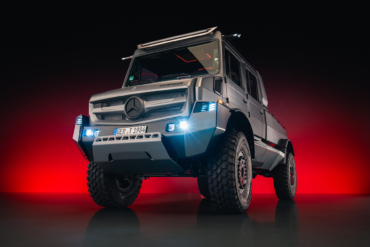The Mach-E price reductions follow Tesla’s decision to cut prices on its own vehicles — including the Model Y, a direct competitor to the Mustang Mach-E — by as much as 20%. In a statement announcing its moves, Ford said it wasn’t willing to “cede ground” to Tesla or any other competitor.
The cuts come as a turnaround for the EV market, which had seen big price hikes over the past year, largely reflecting the increased costs manufacturers have faced for critical raw materials, such as the lithium, cobalt, and nickel used in lithium-ion batteries. But the industry is getting some “breathing room,” according to Sam Abuelsamid, principal auto analyst at Guidehouse Insights, as costs for those minerals have begun coming back down.
Growing EV Demand
Increasing volume should also help drive down the cost of building the Mach-E by improving economies of scale, several analysts pointed out. Ford didn’t release a production target for the electric Mustang, but it sold 39,458 last year — a figure limited by production capacity at the Cuautitlán Izcalli, Mexico, factory building the EV. Based on Ford’s internal numbers, a well-placed insider said the goal is to boost output to 115,000 this year and 166,000 by 2025.
Ford also has begun taking steps to boost production for its second long-range battery-electric vehicle, the F-150 Lightning. It originally tooled up a new facility in Dearborn, Michigan, to roll out 25,000 of the pickups annually. It now hopes to bring capacity up to about 150,000 by the end of 2023.
These moves reflect the growing demand for all-electric vehicles. EVs accounted for less than 1% of the U.S. market in 2019, a figure that grew to 5% for all of 2022, with the share reaching as high as 7% in recent months. That could jump to 20% by 2025, according to John Murphy, lead auto analyst for Bank of America Research – though Murphy said the actual number will likely depend upon keeping EVs affordable.
Taking On Tesla

In the case of Tesla, the automaker raised prices repeatedly over the last two years. And it wasn’t alone. Ford upped the MSRP on both Mach-E and Lightning last year, reflecting its struggle to turn a profit in a segment where most manufacturers have traditionally built EVs at a loss.
But with raw material prices stabilizing and increased sales helping to achieve great economies of scale, Ford appears determined to stay competitive.
“We are not going to cede ground to anyone,” said Marin Gjaja, Chief Customer Officer, Ford Model e, the side of the company focused on battery-electric vehicles. “We are producing more EVs to reduce customer wait times, offering competitive pricing, and working to create an ownership experience that is second to none.”
Is a Price War Coming?

Tesla actually wasn’t the first automaker to cut prices in a bid to boost demand. After having to temporarily halt production due to a battery fire issue, General Motors cut the cost of its Chevrolet Bolt EV and EUV models last year.
And now, some analysts see the possibility that there could be a full-on price war in the EV segment.
“We’re seeing more competition (in the EV market) as more and more models come to market from a variety of manufacturers as everyone is increasing production capacity,” said Abuelsamid. “That’s going to put pressure on everyone.”
Revised Federal Incentive Program
There’s another reason for cutting prices, said Stephanie Brinley, lead analyst with S&P Global Mobility. The newly revised federal EV incentive program sets a cap on the price of vehicles that could qualify for tax credits. The cuts by Tesla and Ford mean at least some of their products will qualify.
Moving forward, the base “Select RWD Standard Range” Mustang Mach-E will start at $45,995 before factoring in delivery fees and taxes, a $900 discount. The all-wheel-drive version gets the smallest price cut of $600 at an MSRP of $48,995. At the top end, the GT Extended Range package drops $5,900 to $63,995.

Mach-E Could Soon Outsell the Classic Mustang Coupe
Ford launched the Mustang Mach-E in December 2020 as a 2021 model. The automaker originally planned to build a so-called “compliance car,” a basic SUV that would help it just meet California’s strict zero-emissions rules. It scrubbed that plan halfway through development and came up with a sportier design with a longer-range battery pack and higher-performance drivetrain.
That approach has paid off. It was the third best-selling EV in the U.S. last year, and Mach-E sales fell just 4,000 behind the traditional Mustang coupe. Once production capacity is increased, industry analysts expect the EV to outsell the gas-powered “pony car.”








